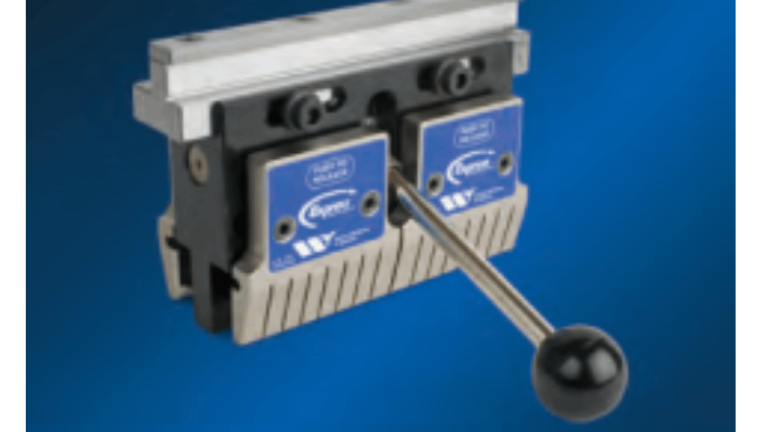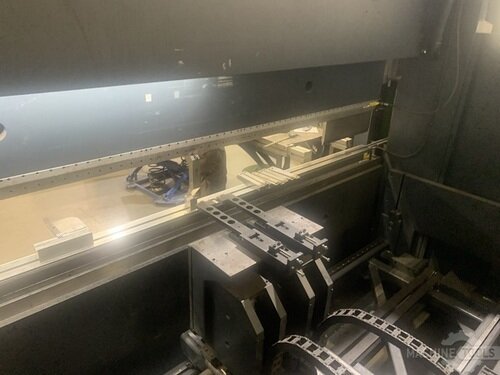As a Regional Sales Executive at Mac-Tech, I partner with fabrication shops every day to help them overcome production bottlenecks, improve accuracy, and ultimately boost profitability. With over a decade of experience in the industry, I’ve seen firsthand how the right combination of equipment—especially when it comes to integrating press brakes with laser cutting systems—can transform a shop’s workflow. My goal is to provide practical, actionable guidance that empowers fabricators to make confident, ROI-driven decisions.
Understanding the Fabrication Landscape: Challenges and Opportunities for ROI
Modern fabrication shops face a fast-evolving landscape. Customers demand shorter lead times, higher quality, and more complex parts, all while margins remain tight. Equipment investments are significant, but so is the cost of inefficiency—idle machines, bottlenecks, or excessive manual handling can erode profits quickly. The challenge is to orchestrate your sheet, plate, and tube processing in a way that maximizes throughput without sacrificing precision.
On the other hand, this environment is ripe with opportunity. Advances in automation, machine connectivity, and smart software have made it possible to create seamless workflows from laser cutting through bending and beyond. Those who embrace integrated solutions stand to gain not just in efficiency, but also in their ability to tackle more diverse jobs and win new business.
The Business Case: Why Integrate Press Brakes with Laser Cutting Systems?
Integrating press brakes with your laser cutting systems isn’t just about having the latest technology—it’s about creating a connected, end-to-end workflow that eliminates wasted movement and manual intervention. When your laser and press brake “talk” to each other—whether through shared offline programming, part tracking, or automated material handling—you dramatically reduce errors, rework, and downtime.
This integration directly impacts your ROI by accelerating job changeovers and enabling lights-out production. It also allows for more consistent part quality, as data flows from design to cut to bend, ensuring dimensional accuracy and repeatability. Shops that successfully integrate their machines see faster order turnaround, fewer scrapped parts, and a more empowered workforce focused on value-added tasks.
Sheet, Plate, and Tube Lasers: Key Features for Modern Fabricators
Today’s fiber lasers for sheet, plate, and tube cutting bring speed, versatility, and precision to the fabrication floor. Key features—such as auto-focus heads, dynamic nesting software, and tube-cutting attachments—enable fabricators to process a wide range of materials and geometries without compromise. Efficient material loading and unloading systems further boost productivity, especially in high-mix, low-volume environments.
For shops considering integration, compatibility is crucial. Look for lasers with open interfaces or built-in support for automation, including robotic part sorting or direct handoff to downstream equipment. The ability to generate bend-ready parts—minimizing secondary deburring or edge prep—sets the stage for a seamless transition to the press brake.
Press Brake Performance: Precision, Flexibility, and Workflow Impact
Press brakes have evolved far beyond simple bending machines. Modern models feature CNC controls, real-time angle measurement, and quick-change tooling systems that make them both precise and flexible. This level of control is essential when working with components coming directly off a laser, as it ensures that each bend is accurate and repeatable.
Moreover, press brakes with offline programming capabilities allow you to simulate bends before production, anticipate collisions, and streamline setup. When integrated with your laser’s software, you can create a digital thread from flat pattern to finished part, reducing manual data entry and the risk of human error. The result is a smoother workflow and higher-quality output.
Tooling Selection and Changeover: Minimizing Downtime, Maximizing Output
Tooling is often the unsung hero of an efficient bending operation. The right selection—matched to your part mix and material—can drastically reduce setup time and improve bend quality. Investing in modular tooling systems or automatic tool changers allows for rapid changeover, especially beneficial in shops handling frequent small-batch jobs.
By standardizing tooling across your most common jobs and using offline setup verification, you can further cut downtime. Integration between your press brake and laser means you can plan tooling needs in advance, ensuring the right tools are ready when the laser-finished parts arrive at the brake. This synchronization keeps your workflow moving and maximizes spindle uptime.
Real-World Workflow Integration: Practical Steps to Streamline Production
Streamlining your workflow starts with mapping out your current process—identifying where parts slow down, get handled multiple times, or wait for the next operation. From there, consider options like automated pallet systems, conveyorized transfer, or robotic part handling to physically connect your laser and press brake.
Digitally, invest in software that allows for shared job scheduling, part tracking, and real-time status updates. Even simple barcode systems can help operators coordinate between machines and reduce paperwork. Training your team to think in terms of end-to-end flow, rather than isolated tasks, is equally important for sustaining gains.
ROI-Driven Equipment Choices: Metrics, Case Studies, and Lessons Learned
When evaluating new equipment or integration projects, focus on metrics that tie directly to ROI: machine utilization rates, setup and changeover time, scrap rates, and labor hours per part. Successful shops often pilot integration on a high-volume product line, track the improvements, and then scale the approach across other areas.
Case studies consistently show that integrated workflows lead to 20–40% reductions in lead time, with similar gains in labor efficiency. The key lesson? ROI isn’t just about the sticker price of a machine, but how that machine fits into—and elevates—your entire production process. Partnering with equipment providers who understand and support your goals makes all the difference.
ERMAKSAN POWER-BEND FALCON BENDING MACHING
Building Partnerships: Collaborative Approaches to Equipment Investment
No two fabrication shops are alike—and neither are their integration needs. That’s why I advocate for a consultative approach, working closely with customers to assess their current workflow, growth plans, and technical requirements. A good equipment partner will help you identify not just the right machines, but also the right interfaces, software, and support to ensure long-term success.
Collaboration extends beyond the initial sale. Ongoing training, preventative maintenance, and process optimization reviews are all part of building a partnership that delivers sustainable ROI. At Mac-Tech, we pride ourselves on being a true ally to our customers—helping them stay ahead of industry trends and competitive pressures.
Future-Proofing Your Fabrication Shop: Trends and Technology Roadmap
Looking ahead, the push toward Industry 4.0 and smart manufacturing is only accelerating. Connected machines, cloud-based analytics, and predictive maintenance are moving from buzzwords to must-haves. Fabricators who invest in equipment with open architecture and upgrade paths will be best positioned to adopt new technologies as they emerge.
Keep an eye on developments in AI-driven process optimization, collaborative robotics, and digital twins—all of which promise to further enhance integration between lasers, press brakes, and other fabrication equipment. By prioritizing flexible, scalable solutions today, you’ll ensure your shop remains competitive and adaptable for years to come.
Frequently Asked Questions
How much efficiency can I really gain by integrating my press brake and laser systems?
Many shops see 20–40% reductions in lead time and similar improvements in labor efficiency.
Is integration possible with my existing equipment, or do I need to buy all new machines?
Integration is often possible with upgrades or add-ons, but some older equipment may have limitations. A consultation can clarify your options.
What features should I look for in a new laser or press brake to ensure future compatibility?
Prioritize open interfaces, automation readiness, and software that supports offline programming and data exchange.
How can I minimize downtime during tooling changeovers?
Invest in quick-change tooling systems, automate setup where possible, and use offline programming to plan ahead.
Will my team need extensive retraining?
Some training is necessary, but modern interfaces are designed for ease of use, and most operators adapt quickly.
How do I measure ROI on an integration project?
Track metrics like machine utilization, setup time, scrap rates, and labor hours per part before and after integration.
Get Weekly Mac-Tech News & Updates








